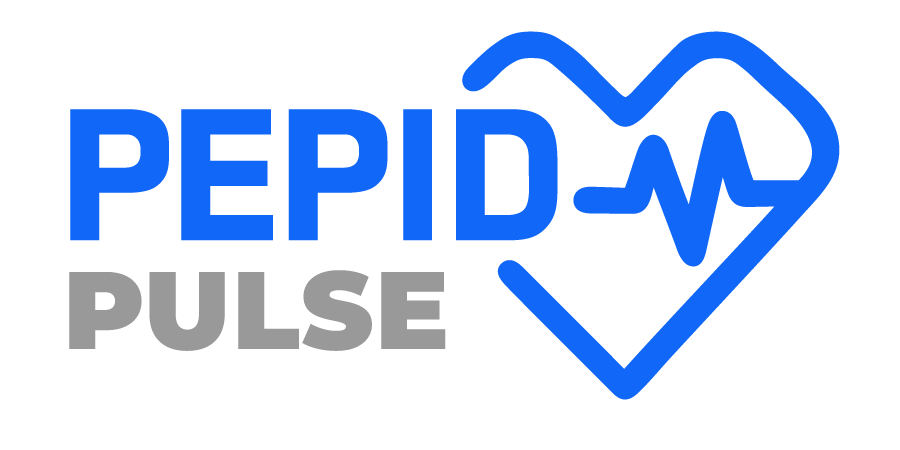Logistical Hurdles of 2020-2021 Flu Season
As we navigate the 2020-2021’s flu season, clinicians must prepare for a level of coinfection between influenza and COVID-19 during periods of community co-circulation of influenza viruses and SARS-CoV-2. There are many logistical hurdles this flu season:
- Limited access to influenza A and B viruses and SARS-CoV-2 tests.
- New considerations for Influenza Immunization.
- Implementing telemedicine to mitigate viral spread.
- Constantly changing recommendations and data related to Coronavirus Disease 2019
Successfully triaging patients during their initial assessment is essential to best support better patient outcomes and better allocate often stretched resources.
COVID-19 & Influenza Resources for Medical Professionals
Stay up to date with the PEPID’s continuously updated clinical content below to better triage, diagnose, and treat COVID-19 and Influenza patients this 2020-2021 Flu Season. Consult tools for rapid assessment including the National Early Warning Score 2, Modified Early Warning Score, 4C Mortality Score, COVID-GRAM Critical Illness Score, and MuLBSTA Score available as monographs and open calculators in PEPID suites. If you haven’t already, take note of ACIP’s Vaccination 2020-2021 changes and recommendations for patients with COVID-19.
Prevent
ACIP’s Vaccination 2020-2021 Recommendations
Summary of Changes for 2020-2021 Influenza Season, U.S. influenza vaccine updates, Vaccines other than ccIIV4 and RIV4, U.S. cell culture-based inactivated (ccIIV4) and recombinant (RIV4) influenza vaccines, Two new influenza vaccines licensures, Influenza Vaccination of Persons with COVID-19, Available Vaccines, 2020-2021 General Recommendations, Contraindications, and Precautions.
Triage
Stay up to date on the latest vaccine recommendations with PEPID professional clinical decision support suites. Written and reviewed by pharmacists, physicians, and nurses. Start a free trial at no cost for 14 days.
Diagnose
COVID-19 (Coronavirus Disease 2019): Diagnostics
History/Symptoms, Emergency Warnings, Physical Exam/Signs, Physical Examination, Laboratory Findings, Labs/testing profile for sever cases/poor outcomes, Testing Criteria, Guidance of Testing Priority, Five Categories of People with Testing Recommendations, COVID-19 Testing, Imaging, Complications, Differential Diagnosis
Treat
COVID-19 (Coronavirus Disease 2019): Therapeutics
Asymptomatics Home Care, CDC Guidelines for Discontinuation of Home Isolation, Mildly Ill Patients, Severe & Critically Ill Patients, Inpatient Care, Special Populations
Calculators for COVID-19
These calculators are included in PEPID suites, to support faster, more accurate decision making when triaging patients. Calculators can only be accessed through an active trial or subscription. Use decision support calculators with caution.
National Early Earning Score 2
The National Early Warning Score 2 is based on the Modified Early Warning Score (MEWS) for Clinical Deterioration and the National Early Warning Score. It is a defined scoring system to aid clinical decision making of routinely recorded physiological data, and should be used with caution. Raised NEWS scores are associated with increased mortality of patients admitted as medical emergencies. This calculator is useful for triaging patients 16 years and older who may be at risk for deterioration and mortality. Do not use this calculator for children under the age of 16.
The National Early Warning Score 2 is calculated based on whether the patient’s respiratory rate, systolic blood pressure, heart rate, temperature, and conscious state, as well as whether the patient is or is not in hypercapnic respiratory failure, and has supplemental oxygen.
Modified Early Warning Score
The Modified Early Warning Score calculators is a defined scoring system to aid clinical decision making of routinely recorded physiological data. The MEWS score is useful for triaging patients who may be at risk for deterioration and mortality. If the Modified Early Warning Score is 30% or higher, the patient will most likely be admitted to ICU or increased risk of death.
The score includes information on the patient’s systolic blood pressure, heart rate, temperature, respiratory rate, and conscious state.
4C Mortality Score
The 4C Mortality Score for COVID-19 is a prognostic and risk stratification tool for patients admitted for COVID-19 based on a study performed by ISARIC WHO clinical characteristics protocol in the UK. The 4C Mortality Score is useful for triaging patients 18 years and older who may be at risk of death from COVID-19 during a hospital stay. This score reflects the clinical data available in most economically developed healthcare settings and has a methodological advantage over current COVID-19 prognostic scores such as its use of penalized regression methods, an event-to-variable ratio greater than 100 to reduce risk of overfitting, use of parameters commonly available at first assessment which increases its clinical applicability.
The 4C Mortality score uses patient demographics, clinical observation and blood parameters that are commonly available at the time of hospital admission, and can accurately characterize the patients at high risk of death in the hospital.
COVID-GRAM Critical Illness Risk Score
The COVID-GRAM Critical Illness Risk Score is based on the research by Liang W, et al for Clinical Risk Score Prediction of COVID-19, and was created to predict which patients with COVID-19 at the time of hospital admission will develop critical illness which is defined as a composite of admission to ICU, invasive ventilation, or death. The COVID-GRAM Critical Illness Risk Score is based on 10 of 72 commonly measured characteristics in COVID-19 patients at the time of hospital admission. Early detection of serious illness among hospitalized COVID-19 patients enables providers to take proactive measures in management.
MuLBSTA Score
The MuLBSTA Score predicts prognoses in hospitalized patients with viral pneumonia supposedly with greater accuracy than CURB-65. The MuLBSTA Score be used to accurately stratify hospitalized patients with viral pneumonia into relevant risk categories and could provide guidance to make further clinical decisions. This score study has not been fully reviewed/validated for use with COVID-19 patients at this time; use with caution in COVID-19 patients


